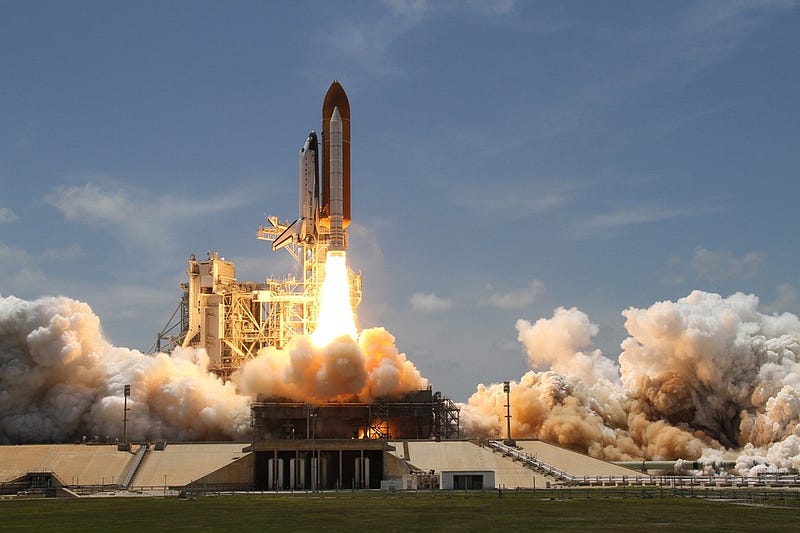How SpaceX can make fully reusable rockets
By Drew Bodmer, Physics and Computer Science, 2022

On February 1, 2003, the space shuttle Columbia broke up on reentry into the Earth’s atmosphere, killing all seven astronauts on board in a chilling reminder of the dangers of space travel. It was discovered that a piece of insulation broke off during the launch and collided with the shuttle’s left wing, damaging the heat shielding. During reentry, superheated gas made its way inside the wing and destroyed control surfaces, causing the shuttle to go into a spin and eventually disintegrate high above Texas.
While every mission to space is perilous, no part of the trip has mission control more on the edge of their seats than reentry. Air resistance at reentry speeds can create temperatures in excess of 1,500 degrees Celsius, and extremely powerful air currents threaten to tear each craft apart if it is not carefully maneuvered. To make things worse, the superheated gas around the spacecraft creates an electromagnetic barrier, blocking all radio contact with the ground. Mission control has essentially no idea what is happening for almost 20 minutes, and must simply sit and wait for contact to be reestablished.
Since every launch currently requires a brand new rocket, getting material into space is exceedingly expensive. Bringing a single bottle of water to the International Space Station can cost NASA upwards of $40,000, according to a 2016 Business Insider article. Even the space shuttle program, touted for its reusable orbiters, required massive refurbishments after every launch. SpaceX, a private company founded by Elon Musk, aims to create rockets that can be cheaply used more than once, massively decreasing the cost of spaceflights.
Since every launch currently requires a brand new rocket, getting material into space is exceedingly expensive. Bringing a single bottle of water to the International Space Station can cost NASA upwards of $40,000.
The first stage of SpaceX’s Falcon 9 rocket is almost entirely reusable, reducing the cost of each launch to a fraction of the price of traditional launches. SpaceX has had unprecedented success so far, becoming the first private company to launch, orbit, and recover a spacecraft, as well as the first private company to dock with the International Space Station.
SpaceX faces a multitude of challenges in getting its rockets home safe after a launch. A reusable rocket must survive the incredible heat generated by reentry. SpaceX’s initial tests using the traditional method of heat shields and parachutes were mostly failures, with the first stage burning up from the temperatures. SpaceX was forced to change its approach, using the rocket’s engines to decelerate instead of letting it fall to Earth, according to details on its website. Using the rocket’s engines to slow down has the cost of bringing more fuel into orbit but comes with two main advantages.
The first benefit is that an initial deorbit burn of the engines — when the rocket fuel is ignited to create thrust — can slow the rocket down significantly, drastically reducing the heat and stress of reentry. The second involves the way heat is generated by air resistance. At high speeds, most of the heat is created by the compression of air at the front of the spacecraft, not friction from the air passing over the skin. This pocket of compressed air in front of the reentry vehicle is what makes reentry so dangerous. At this point in reentry, the Falcon completes a second burn. In addition to slowing down further, this burn has an interesting effect. The spent propellant acts as a heat shield for the Falcon during the worst parts of reentry. It essentially pushes the pocket of superheated air away from the rocket, keeping the temperatures on the skin of the rocket at reasonable levels.
SpaceX has had unprecedented success so far, becoming the first private company to launch, orbit, and recover a spacecraft.
SpaceX’s groundbreaking reentry and landing systems are paving the way towards more affordable space travel, and even opening the possibility for a manned mission to Mars. There are still many obstacles that must be overcome before the first human steps foot on the Red Planet, but it is certainly in our future.
